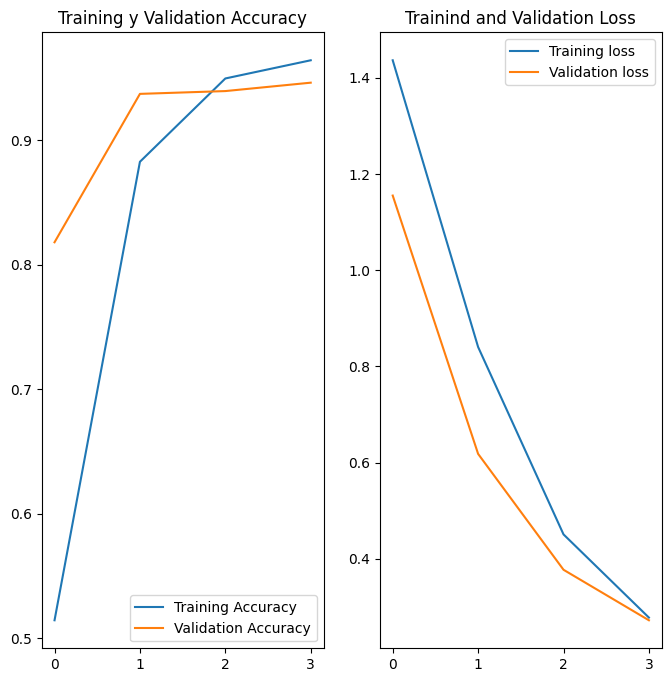C3W2: Diving deeper into the BBC News archive
C3W2: Diving deeper into the BBC News archive#
BBC News Classification Dataset
2225 examples of new articles with their respective categories (labels).
import tensorflow as tf
from tensorflow.keras import layers, losses
import matplotlib.pyplot as plt
import numpy as np
import csv
import re
import string
VOCAB_SIZE = 1000
EMBEDDING_DIM = 16
SEQUENCE_LENGTH = 120
OOV_TOKEN = '[UNK]'
TRAINING_SPLIT = .8
stopwords = ["a", "about", "above", "after", "again", "against", "all", "am", "an", "and", "any", "are", "as", "at", "be", "because", "been", "before", "being", "below", "between", "both", "but", "by", "could", "did", "do", "does", "doing", "down", "during", "each", "few", "for", "from", "further", "had", "has", "have", "having", "he", "he'd", "he'll", "he's", "her", "here", "here's", "hers", "herself", "him", "himself", "his", "how", "how's", "i", "i'd", "i'll", "i'm", "i've", "if", "in", "into", "is", "it", "it's", "its", "itself", "let's", "me", "more", "most", "my", "myself", "nor", "of", "on", "once", "only", "or", "other", "ought", "our", "ours", "ourselves", "out", "over", "own", "same", "she", "she'd", "she'll", "she's", "should", "so", "some", "such", "than", "that", "that's", "the", "their", "theirs", "them", "themselves", "then", "there", "there's", "these", "they", "they'd", "they'll", "they're", "they've", "this", "those", "through", "to", "too", "under", "until", "up", "very", "was", "we", "we'd", "we'll", "we're", "we've", "were", "what", "what's", "when", "when's", "where", "where's", "which", "while", "who", "who's", "whom", "why", "why's", "with", "would", "you", "you'd", "you'll", "you're", "you've", "your", "yours", "yourself", "yourselves" ]
def parse_data_from_file(filename):
sentences = []
labels = []
with open(filename, 'r') as csvfile:
reader = csv.reader(csvfile)
next(reader)
for row in reader:
sentences.append(row[1])
labels.append(row[0])
return sentences, labels
dataset_path = '../../../data/bbc-text.csv'
sentences, labels = parse_data_from_file(dataset_path)
def train_val_split(sentences, labels, training_split):
train_size = int(len(sentences) * training_split)
train_sentences = sentences[:train_size]
y_train = labels[:train_size]
validation_sentences = sentences[train_size:]
validation_labels = labels[train_size:]
return train_sentences, validation_sentences, y_train, validation_labels
train_sentences, val_sentences, y_train, val_labels = train_val_split(sentences, labels, TRAINING_SPLIT)
print(f"{len(train_sentences)} sentences for training.")
print(f"{len(val_sentences)} sentences for validation.")
1780 sentences for training.
445 sentences for validation.
def custom_standardization(input_data):
text = tf.strings.lower(input_data)
text = tf.strings.regex_replace(text, '[%s]' % re.escape(string.punctuation), ' ')
for word in stopwords:
text = tf.strings.regex_replace(text, rf'\b{word}\b', '')
return text
classes = {label: i for i, label in enumerate(set((y_train)))}
y_train = [[classes[label]] for label in y_train]
val_labels = [[classes[label]] for label in val_labels]
raw_train_ds = tf.data.Dataset.from_tensor_slices((train_sentences, y_train))
raw_val_ds = tf.data.Dataset.from_tensor_slices((val_sentences, val_labels))
vectorize_layer = layers.TextVectorization(
standardize=custom_standardization,
max_tokens=VOCAB_SIZE,
output_sequence_length=SEQUENCE_LENGTH)
vectorize_layer.adapt(train_sentences)
def vectorize_text(text, label):
text = tf.expand_dims(text, -1)
return vectorize_layer(text), label
train_ds = raw_train_ds.map(vectorize_text)
val_ds = raw_val_ds.map(vectorize_text)
train_ds = train_ds.cache().prefetch(tf.data.AUTOTUNE)
val_ds = val_ds.cache().prefetch(tf.data.AUTOTUNE)
def create_model(vocab_size, embedding_dim, sequence_length):
model = tf.keras.Sequential([
layers.Embedding(vocab_size, embedding_dim),
layers.Dropout(0.2),
layers.GlobalAveragePooling1D(),
layers.Dropout(0.2),
layers.Dense(5)])
model.compile(optimizer='adam',
loss=losses.SparseCategoricalCrossentropy(from_logits=True),
metrics=['accuracy'])
return model
class myCallback(tf.keras.callbacks.Callback):
def on_epoch_end(self, epoch, logs={}):
if logs['accuracy'] > 0.95 and logs['val_accuracy'] > 0.9:
print('\nReached 95% accuracy and 90% validation accuracy so cancelling training!')
self.model.stop_training = True
callback = myCallback()
model = create_model(VOCAB_SIZE, EMBEDDING_DIM, SEQUENCE_LENGTH)
history = model.fit(train_ds, epochs=30, validation_data=val_ds, callbacks=[callback])
Epoch 1/30
1780/1780 [==============================] - 13s 6ms/step - loss: 1.4364 - accuracy: 0.5146 - val_loss: 1.1552 - val_accuracy: 0.8180
Epoch 2/30
1780/1780 [==============================] - 12s 7ms/step - loss: 0.8404 - accuracy: 0.8826 - val_loss: 0.6182 - val_accuracy: 0.9371
Epoch 3/30
1780/1780 [==============================] - 11s 6ms/step - loss: 0.4509 - accuracy: 0.9494 - val_loss: 0.3773 - val_accuracy: 0.9393
Epoch 4/30
1773/1780 [============================>.] - ETA: 0s - loss: 0.2778 - accuracy: 0.9645
Reached 95% accuracy and 90% validation accuracy so cancelling training!
1780/1780 [==============================] - 11s 6ms/step - loss: 0.2779 - accuracy: 0.9640 - val_loss: 0.2723 - val_accuracy: 0.9461
acc = history.history['accuracy']
val_acc = history.history['val_accuracy']
loss = history.history['loss']
val_loss = history.history['val_loss']
plt.figure(figsize=(8, 8))
plt.subplot(1, 2, 1)
plt.plot(acc, label='Training Accuracy')
plt.plot(val_acc, label='Validation Accuracy')
plt.legend(loc='lower right')
plt.title('Training y Validation Accuracy')
plt.subplot(1, 2, 2)
plt.plot(loss, label='Training loss')
plt.plot(val_loss, label='Validation loss')
plt.legend(loc='upper right')
plt.title('Trainind and Validation Loss')
plt.show()

